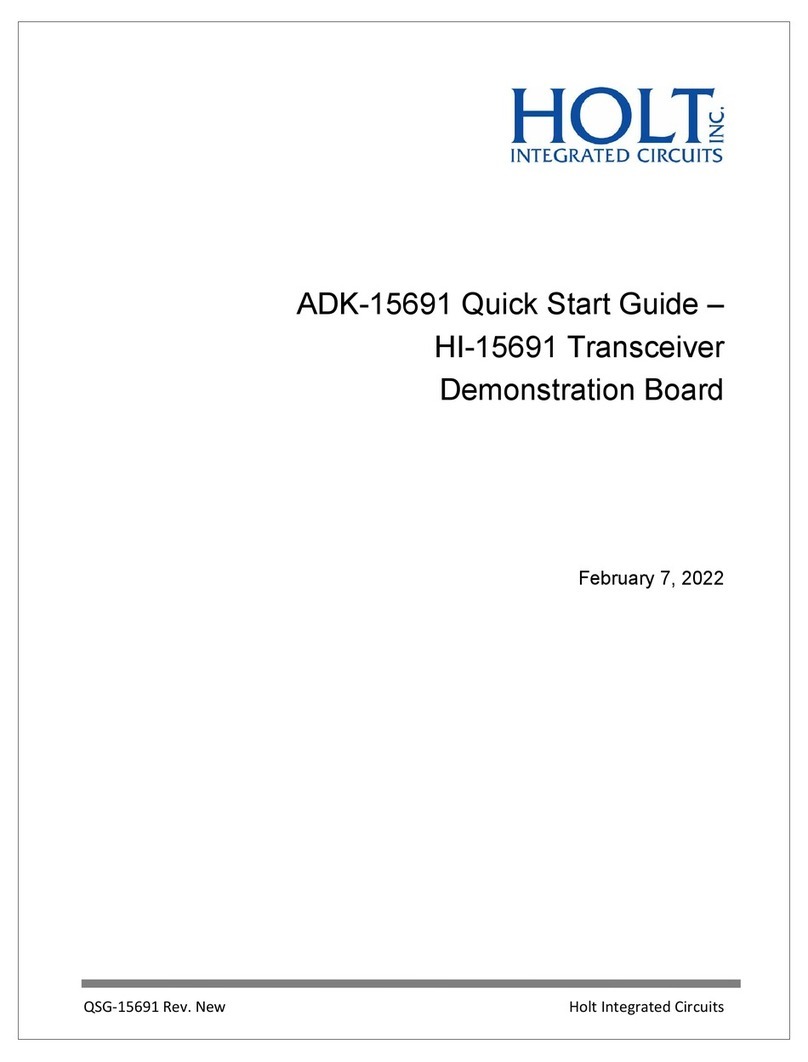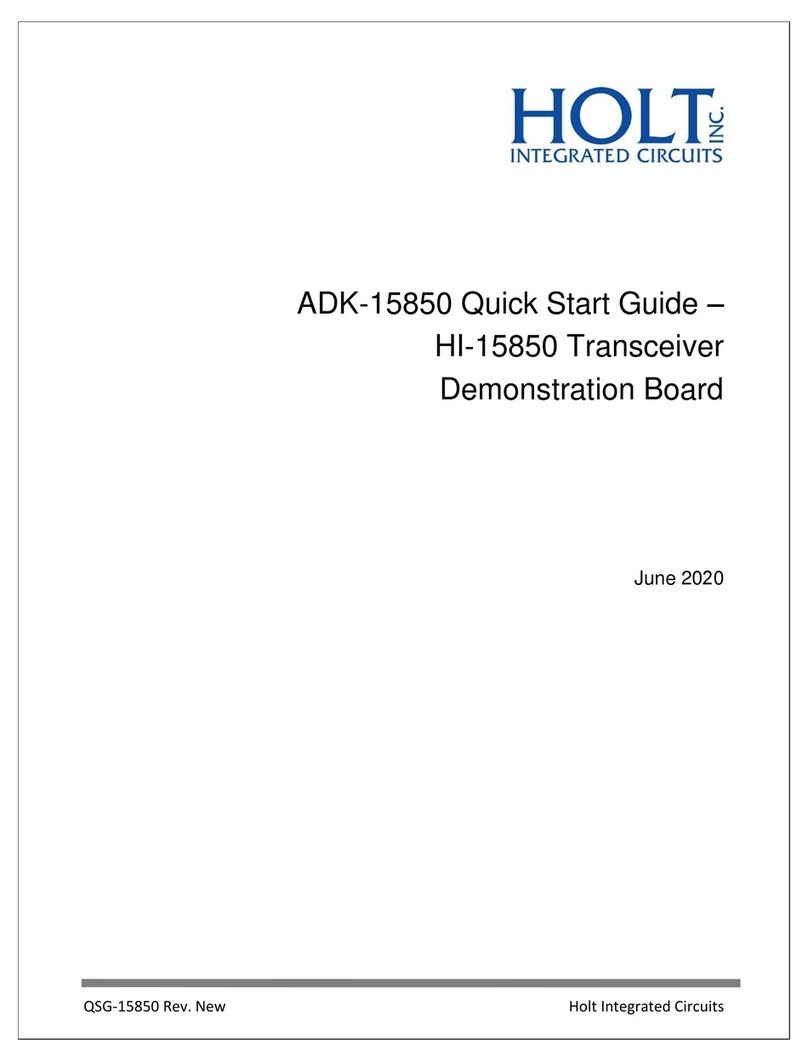
QSG-2130mPCIe Rev. A Holt Integrated Circuits
9
9. Open a bash terminal window, change the working directory to ~/holt and execute the run script using the sh
cmd:
10. Linux will ask for the password since a bash sudo operation is required to load the module. Enter “holtpcie” and
press return. The ‘run’ script checks the OS to see if the Xilinx Device 7011 PCIe device is found then executes two
bash scripts: first to unload and then to (re)load the kernel module and lastly runs the Demo executable.
LED8 ‘LINK’ is an indicator that the PCIe OS link was successful. If this LED is not “on”, the board will not work. See
trouble shooting section at the end of this document. If the console shows the message below “…Xilinx
Corporation Device 7011” then it was OK.
holt@holt-desktop:~/holt$ sh run
[sudo] password for holt:
Holt Linux driver (HI2130_pcie) unloaded
dev='/dev/HI2130_pcie0' major='238' minor='0'
dev='/dev/HI2130_pcie1' major='238' minor='1'
dev='/dev/HI2130_pcie2' major='238' minor='2'
dev='/dev/HI2130_pcie3' major='238' minor='3'
crw-rw-rw- 1 root root 238, 0 May 16 11:25 /dev/HI2130_pcie0
crw-rw-rw- 1 root root 238, 1 May 16 11:25 /dev/HI2130_pcie1
crw-rw-rw- 1 root root 238, 2 May 16 11:25 /dev/HI2130_pcie2
crw-rw-rw- 1 root root 238, 3 May 16 11:25 /dev/HI2130_pcie3
Holt Linux driver (HI2130_pcie) loaded
bsp Demo makefile objects.mk sources.mk
Initializing all active HI-2130 for modes: BC RT RT2 MT RTMT
Device memory word size: 32768 words
The Holt PCIe driver indicates there are 2 device(s) found as follows:
Chan ___PCIe____ HI-2130
Id Bus BAR Irq Present Device File Note
==== === === === ======= ================= ========================================
0 8 0 42 Yes /dev/HI2130_pcie0 current channel being used by demo
1 8 1 43 Yes /dev/HI2130_pcie1
Initializing HPL for channel: 0... success.
Initializing HPL for channel: 1... success.
Reset HI-2130 on channel 0... Setting nMR LOW... HIGH...
(READY asserted) Success
Re-enabling all terminals to run: BCEna RT1Ena RT2Ena MTRUN Success.
All channels commencing polling operation.
********************************************************************************
Holt Integrated Circuits HI-2130 API Demo Project
Demonstration Rev 4.2 Compiled: May 11 2023 14:29:43
Holt Portable Library version: 4.2.0
Device-core version: 0.11.6
Configured demonstrations: BC RT RT2 MT RTMT Supplemental Comp-mode
********************************************************************************






























